
I met Gregg Haff at the NSCA Coaches Conference in Louisville this past January. I attended a few of his presentations over the last few years and with his knowledge and vision, I am extremely excited he is the next president elect of the NSCA. This is a great piece by him which is an excerpt from the NSCA's Guide to program design.
Understanding the Conjugated Sequencing Model
by NSCA Kinetic Select
and Greg Haff PhD, CSCS,*D, FNSCA
The following is an exclusive excerpt from the book NSCA’s Guide to Program Design, part of the NSCA’s Science of Strength and Conditioning Series with Human Kinetics. All text and images provided by Human Kinetics.
Conjugated Sequencing Model
The conjugated sequencing model, or coupled successive system, as it was originally termed, is a system for sequencing and integrating training factors typically employed with advanced athletes (41,44,64,69,71,74,78, 80,83,86,88). Central to this model is the sequencing of accumulation (concentrated loading), transmutation, and realization or recovery mesocycles in order to take advantage of residual (delayed) training effects (Figure 1) (43,44,64,80,81,84).
Theoretically, the annual training plan can be constructed by sequencing these three basic mesocycle structures and designing the training interventions in the context of the phases (i.e., preparatory or competitive) contained in the annual plan (Figure 2).
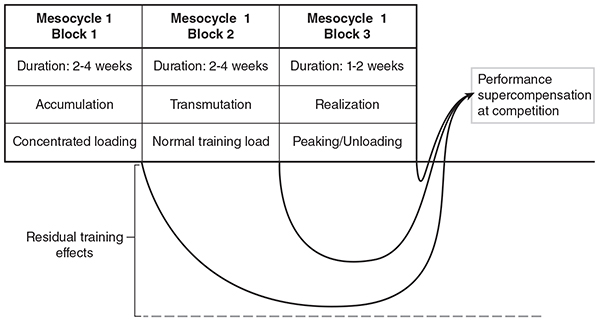 Figure 1. Basic conjugated sequencing structure. Adapted from Issurin (43,44).
Figure 1. Basic conjugated sequencing structure. Adapted from Issurin (43,44).
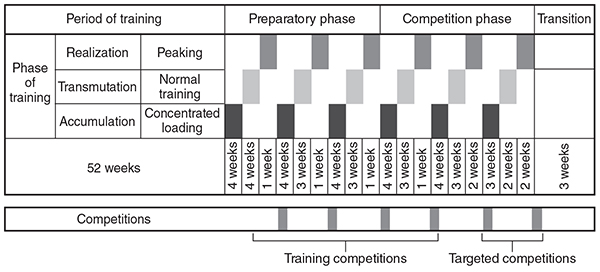 Figure 2. Example of an annual training plan containing a sequential application of accumulation, transmutation, and realization mesocycles. Adapted by Issurin (43,44).
Figure 2. Example of an annual training plan containing a sequential application of accumulation, transmutation, and realization mesocycles. Adapted by Issurin (43,44).
Central to the effectiveness of the conjugated sequencing model is the use of concentrated loading blocks, which are considered as the primary component of the accumulation block. Typically, the accumulation block lasts between two and four weeks, during which either performance or preparedness is decreased in response to an elevated level of accumulative fatigue (64). Conceptually, the concentrated loading block saturates the system with one major training emphasis, while complimentary training factors are addressed with a smaller emphasis (Figure 3).
For example, when sequencing training for speed development, the primary emphasis in the accumulation block would target maximal strength development, while the secondary emphasis would focus on muscular power, and the tertiary emphasis would be on speed and agility (6,62). As training shifts into the second block, or the transmutation block, the emphasis changes and the workloads are redistributed. In the example presented in Figure 3, the primary emphasis of the transmutation block is muscular power, while the secondary emphasis is speed and agility, and the tertiary emphasis is maximal strength.
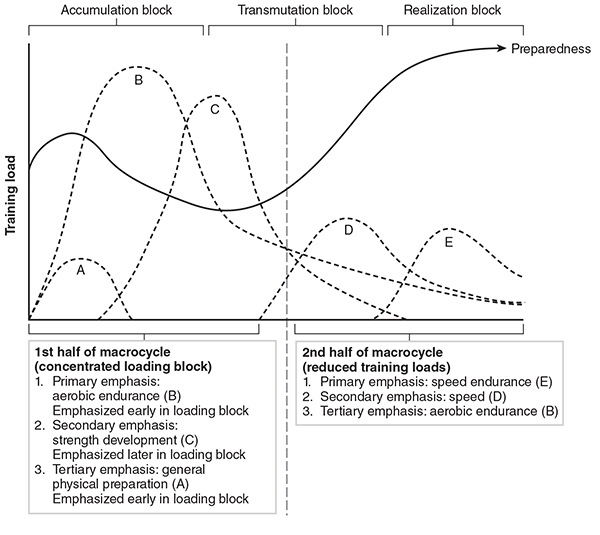 Figure 3. Example of a sequential application of accumulation, transmutation, and realization blocks for developing speed.
Figure 3. Example of a sequential application of accumulation, transmutation, and realization blocks for developing speed.
The selection of these training factors is based on the relationships among maximal strength, power development, and the expression of speed. Typically, strength must be increased before power can be developed and then expressed as speed. The reorientation of the training emphasis facilitates recovery and takes advantage of the delayed training effects (residuals) developed by the accumulation block.
After completing two to four weeks of the transmutation block, a realization or restitution block, which lasts between one and two weeks, will be performed (6,43,44). The realization block of the sequential plan results in continued dissipation of fatigue and a significant increase in preparedness and performance, which occurs in response to changes in training focus and a reduction in training load. For example, in Figure 3, the realization block contains a primary emphasis on speed and agility, a secondary emphasis on muscle power, and a tertiary emphasis on maximal strength, while reducing workloads in order to maximize preparedness and performance.
When constructing a training plan, several blocks of accumulation, transmutation, and realization can be linked together in order to direct training toward specific physiological and performance outcomes. If sequenced appropriately, the athlete’s level of preparedness and performance will increase across the sequentially linked blocks of training and in response to the realization block (Figures 4 – 6). Figure 4 presents an example of a conjugated sequencing model in which a systematic overlapping of accumulation, transmutation, and realization blocks is used to direct preparedness for speed-strength performance.
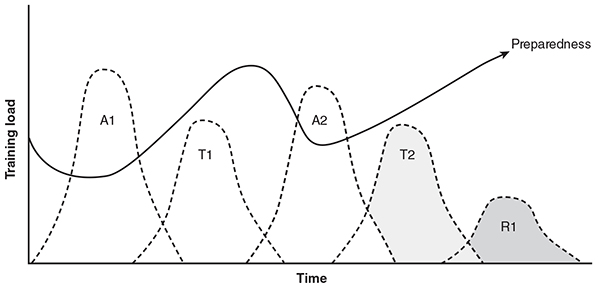 Figure 4. Sequencing of accumulation, transmutation, and restitution blocks of training for speed strength development. Adapted from Siff; Siff and Verkoshansky; and Stone, Stone, and Sands (69,70,80).
Figure 4. Sequencing of accumulation, transmutation, and restitution blocks of training for speed strength development. Adapted from Siff; Siff and Verkoshansky; and Stone, Stone, and Sands (69,70,80).
In this example, two accumulation blocks (A1 and A2) contain high-volume, low-intensity strength training. During this time, performance is expected to decrease in response to accumulative fatigue (80). During the transmutation blocks (T1 and T2), the training focus shifts toward high-intensity speed work coupled with technical training. The reduction in training load and the shift in training emphasis results in a dissipation of accumulated fatigue and stimulates a corresponding elevation in preparedness. After the second transmutation phase (T2), a realization (R1) block is planned. In this block, training load will be further reduced and performance will supercompensate in response to a further reduction in accumulated fatigue (69,80,88).
Figure 4 represents a basic conjugated sequencing model, but more complex training structures can be created (Figures 5 and 6). For example, in Figure 5, the sequencing of training factors is more complex. In this example, the targeted performance outcome is, again, speed and strength. It presents a more complex illustration for a sequential ordering of the accumulation, transmutation, and realization blocks of training. The accumulation block is contained in the first half of the training structure.
This block depicts an early emphasis that centers on strength-endurance and anaerobic conditioning, followed by a shift toward maximal strength and an increasing emphasis on technical (i.e., skill) training and speed training. In the second half of this plan, the early portion represents the transmutation block, which shifts the emphasis toward the development of strength and power while continuing to focus on technical and speed training. Anaerobic conditioning is maintained. The final portion of the presented structure depicts the realization block, where technical and speed training are the primary focus and minimal emphasis is placed on anaerobic conditioning. Here, strength/power capabilities peak.
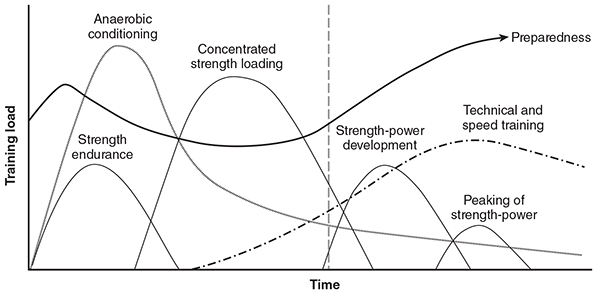 Figure 5. Sample sequencing of training that targets speed-strength development. Adapted from Siff, and Siff and Verkoshansky (69,70).
Figure 5. Sample sequencing of training that targets speed-strength development. Adapted from Siff, and Siff and Verkoshansky (69,70).
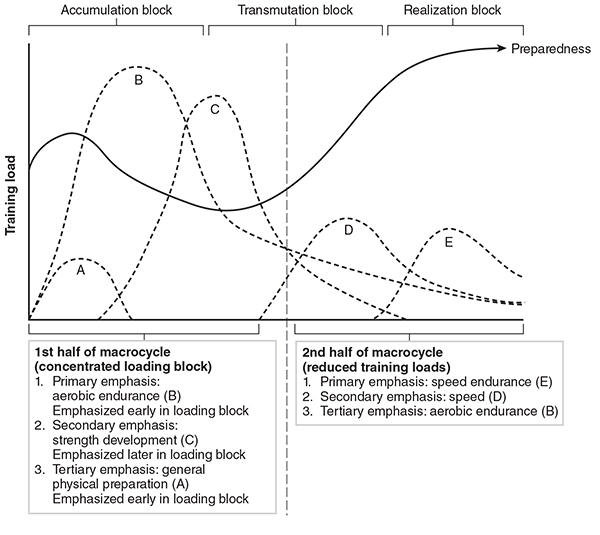 Figure 6. Sample sequencing model for a sport that requires medium-duration endurance. Adapted from Issurin, Plisk, and Bompa and Haff (6,43,44,62).
Figure 6. Sample sequencing model for a sport that requires medium-duration endurance. Adapted from Issurin, Plisk, and Bompa and Haff (6,43,44,62).
Another example of a conjugated sequencing model is presented in Figure 6. In this model, the targeted outcome is medium-duration endurance. Aerobic endurance, general physical preparation, strength development, and speed-endurance are all sequentially manipulated in order to direct preparedness.
Ultimately, if the blocks of training are sequenced and integrated appropriately with the conjugated sequencing model, the athlete’s preparedness will be increased and performance will be supercompensated at the appropriate time points (69,80,88). When compared with a traditional, multidimensional training approach, the conjugated sequencing model has the potential to produce superior performance gains (33,40,54,64,76,80). It appears that this model is particularly useful when targeting the development of power and speed, as compared to training heavy resistance or speed strength exclusively (33,76).
Read the original article here
NSCA’s Guide to Program Design, published by Human Kinetics, offers strength and conditioning professionals a scientific basis for developing training programs for specific athletes at specific times of the year. Look for it in the NSCA Store.
About the Author:
G. Gregory Haff, PhD, CSCS,*D, FNSCA
 G. Gregory Haff is the Course Coordinator for postgraduate studies in the Strength and Conditioning Program at Edith Cowan University. He is the President Elect of the National Strength and Conditioning Association (NSCA), a Senior Associate Editor for the Journal of Strength and Conditioning Research (JSCR), and former Assistant Editor-in-Chief for the JSCR.
G. Gregory Haff is the Course Coordinator for postgraduate studies in the Strength and Conditioning Program at Edith Cowan University. He is the President Elect of the National Strength and Conditioning Association (NSCA), a Senior Associate Editor for the Journal of Strength and Conditioning Research (JSCR), and former Assistant Editor-in-Chief for the JSCR.
Erin Haff, MA
Erin Haff is a coach of the mTOR Barbell Weightlifting Club in Joondalup, Western Australia. Prior to that, she was the Strength and Conditioning Coach for West Coast Fever and the Personal Trainer Supervisor for Edith Cowen University.








